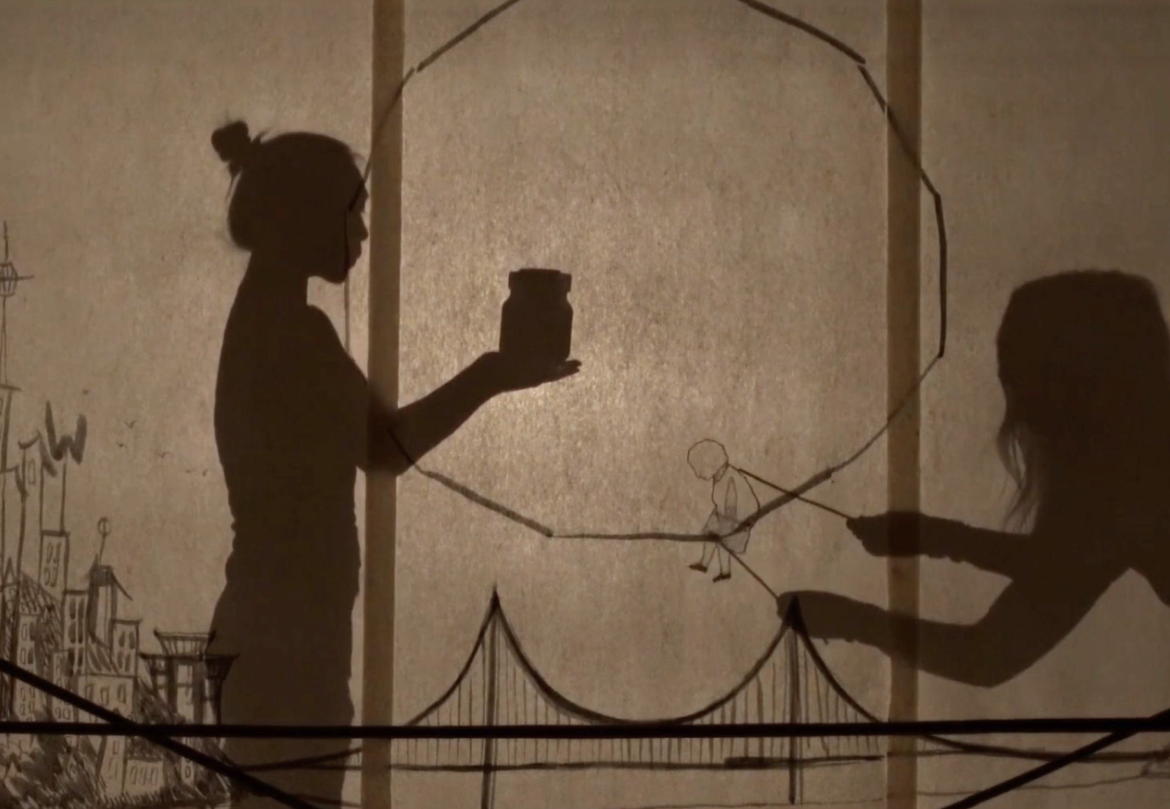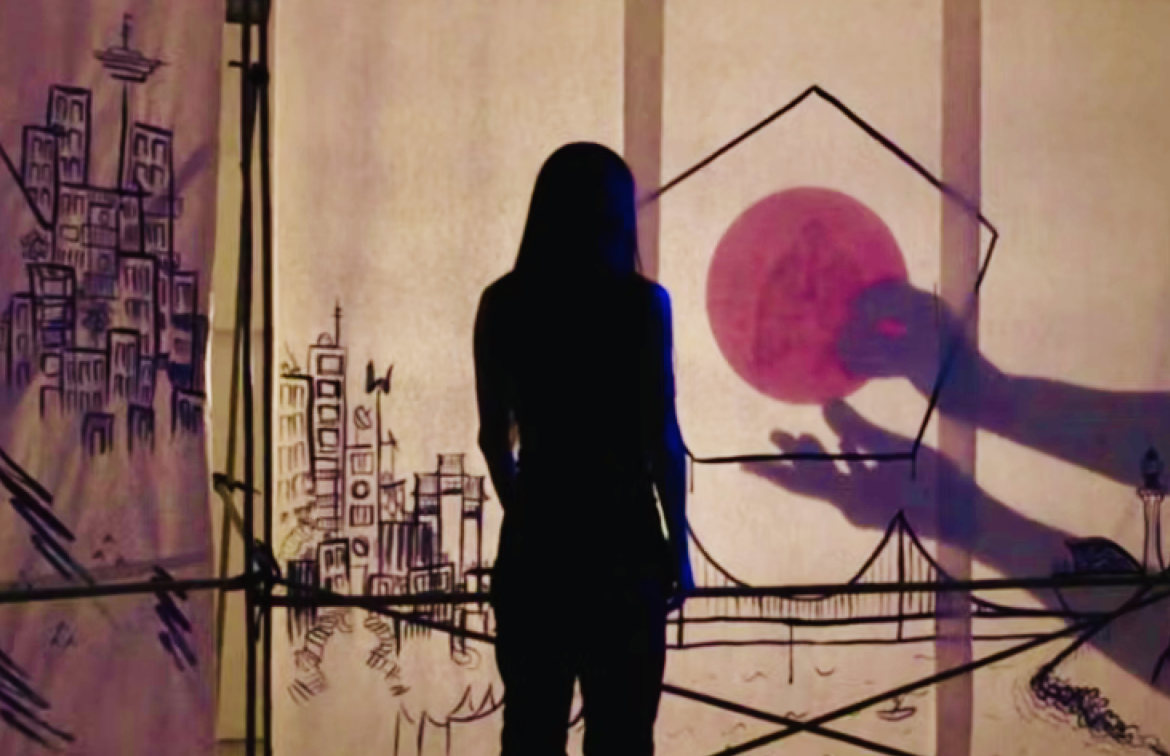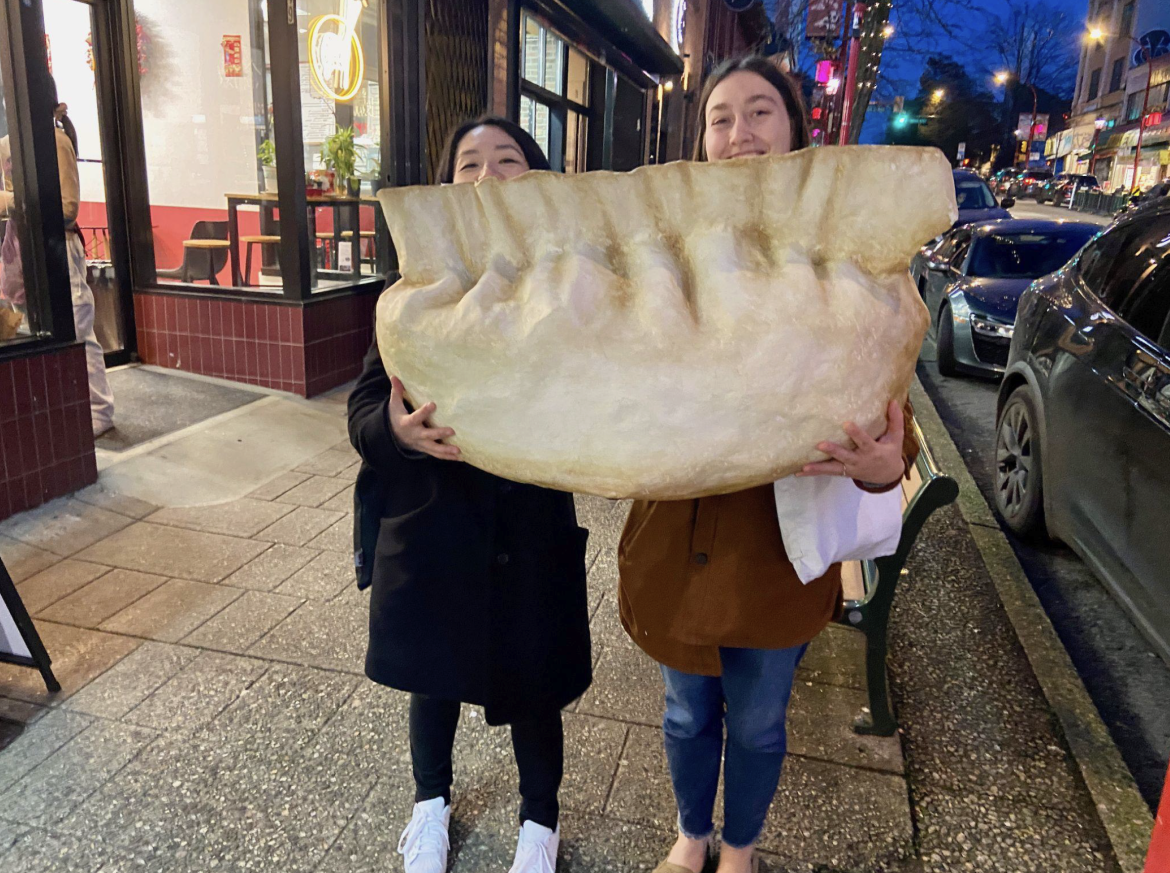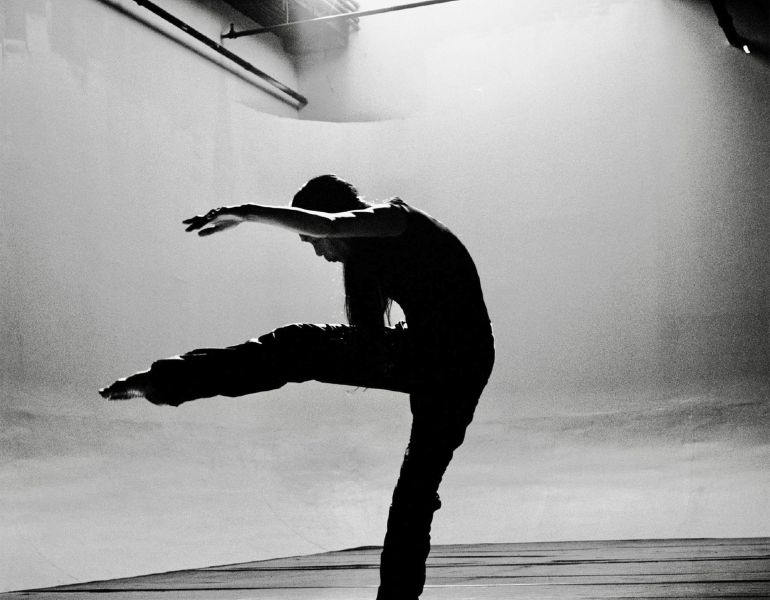The Meet The Artist series highlights talented performing arts professionals from diverse backgrounds. We encourage you to read these interviews with an open mind, and to remember that starting a relationship with an artist can be something smaller than a mainstage show such as inviting them to lead a workshop, sit on a panel, or collaborate with another artist.
This month Ksenija Spasic interviewed Andrea Nann & Annie Katsura Rollins.
Their show Firehorse and Shadow will make its Tkarón:to debut at the Citadel: Ross Centre for Dance, running from June 5–8, 2025.
Cover photo of Andrea Nann by Camille Rojas
Image

Ksenija: The show’s title, Firehorse and Shadow, is very evocative. I understand that these words are significant in a personal way. Andrea, you were born in the year of the Firehorse, a sign associated with rebelliousness and so considered unlucky for women. Annie, as a shadow puppeteer, the connection seems clear, though of course shadows are also deeply symbolic in other ways and an integral part of reality.
I wonder, how did this project move from the realm of ideas into the realm of reality? Could you talk a bit about how you two came to collaborate?
Andrea: Annie and I were introduced by Deanna Wong, executive director of Reel Asian Film Festival and former Dreamwalker Dance Company board member. Deanna said, “I've just met this incredible woman, Annie Rollins, and I think you two should get together because I think you'll love each other.” She was right. We did!
We were at Home Bakery in Toronto, sharing a sticky bun. And the conversation was such a delight. I felt like I was sitting across from a kindred spirit. I thought, “We have to do something together just so I can spend more time with this incredible human being.”
Annie: That's how I felt too.
Andrea: I have been working for many years with my very close friend and collaborator, choreographer Sarah Chase. Sarah’s art form is dance storytelling and she became an important creative contributor as Annie and I were starting to share a lot of stories. And then there was the shadow work, and the visual storytelling that Annie was bringing to the process, so we also invited multi-media installation artist Cindy Mochizuki to join our creation ensemble as dramaturge.
The four of us gathered at The Banff Center as part of the Dance Artists in Residence program and that's where we really started building the work from these four unique perspectives, but centred on the stories of my mom, my grandmother and my great grandmother.
Ksenija: When was this collaborative creation taking place?
Andrea: We met in 2018.
Annie: And we were working on it for most of 2019. Cheers to seven years, Andrea!
Ksenija: And then came 2020. Was there a live performance of the show?
Andrea: No. But we did create an interactive online version which still exists! [Check it out here]
This was a major production that brought our ensemble together with web designers Elysha Poirier and Omar Faleh, filmmaker Henry Mak, D.O.P Eric Chan, lighting designer Jennifer Lennon, and composer Ben Grossman.
Ksenija: Were there any benefits to this pandemic-necessitated pivot into online presentation?
Andrea: This digital format invited audiences to engage with Firehorse and Shadow in a personal and immersive way. And it was interactive! Users choose their own pathways and input their birth date to reveal personalized insights tied to their Chinese Zodiac sign and corresponding element. There were also opportunities for us to screen sections of the work as short films. Because the show is episodic, there were playlists that we could put together. It made the work modular and adaptable.
We didn't create the live performance until 2023. We premiered it during Asian Heritage Month (which is May) in Vancouver.
Image

Ksenija: Thank you for that insight into Firehorse and Shadow’s inception and its first, virtual incarnation. Could you talk a bit about what it would be like to experience the live performance as an audience member?
Annie: As Andrea said, you will experience personal storytelling from Andrea about her matrilineal line. You're going on a discovery tour alongside her, and it is supported with this archaeology of shadow visuals. We uncover layers of understanding from her past and from the women who've passed things down to her. They are illustrated through a glowing screen that frames her movement and storytelling.
She is often in the foreground, spinning, dancing, finding all these things and sharing them with us. And I am her conduit board, supporting her discoveries and helping the audience visualize them.
Andrea: The journey goes through so many different places, some of them energetic, fun and silly, some of them very deep and painful; some far in the past and some in the present moment.
Ksenija: How is Firehorse and Shadow presented to the audience? Does it take place on a stage?
Annie: It can, but not necessarily. In Vancouver, it was not a stage per se.
Andrea: The set does feature an incredible element that Annie brought, which is the illuminated screen, hand-painted with Chinese ink in real time. So as the audience enters, Annie is painting the landscape of the Vancouver skyline that contains a bit of Chinatown and some of its signature architectural features, a bit of Stanley park, the Lions Gate Bridge and the North Shore Mountains.
Ksenija: So, the audience is coming in and seeing Annie paint.
Annie: They can see me as a shadow, yes.
Ksenija: I love the idea of this performance before the performance which is also world-building and introducing the viewer to how the visuals will work.
Andrea: Yes, this painted landscape is an integral part of the story. Things are added to the landscape and those additions build to an important conclusion. We bring people into the perimeter of Vancouver's Chinatown, speaking the names of the streets and drawing the outline. And it's interesting when you talk about an area that has been designated, like Chinatown. An area that was reinforced by boundaries.
Ksenija: I know there is a movement component and we’ve talked about the visuals, which sound spectacular. Is there any writing or speaking in the show?
Andrea: Yes! The languages in this performance are multiple and multimodal. There is speaking and storytelling, and then there are the languages of shadows, ink that transforms the paper; there's gestural language; and animation.
Ksenija: How is the animation displayed? Is there projection onto the screen? And who is doing the speaking?
Annie: Yes, there is projection.
Andrea: And both of us are speaking.
Ksenija: In terms of presenting the show, what are some things this performance would require from a potential venue?
Andrea: What I think is really beautiful about this work is that the aesthetic and its basic setup allow it to be performed anywhere and brought easily to different locations. The whole purpose of this form of storytelling is to bring people together, to bring this kind of artform to people and not require a specific location like a traditional theatre.
Annie: In many ways the physical logistics of the performance are quite flexible. This show is intentionally easy to move. It's itinerant theatre. Shadow puppetry, in its history, is itinerant and it remains so. The set pieces are bamboo and paper. We need electricity, some control of the sound and light, but that’s really it. It could be presented anywhere. I’ve never thought about outdoor performance, but that could work too.
Ksenija: Given that there is projection and backlighting for the shadow puppetry, I imagine it might be tricky during the day, but incredibly beautiful at night.
Speaking of this show’s portable nature, I know that the work is going on tour and will be presented in Toronto from June 5th to 8th. Are you open to the possibility of performances elsewhere in Ontario?
Andrea: Yes! We’d love to tour Ontario!
Image

Ksenija: Looking ahead, what are your hopes for Firehorse and Shadow?
Andrea: We have a broader project that supports this work called Firehorse and Shadow in Community that extends the live performance through a series of creative workshops offering participants embodied opportunities to explore the themes of the work (identity, memory, and intergenerational connection).
For example, one of the metaphors in the work is the dumpling. In the ideal dumpling, the contents are perfectly sealed and contained. Every one of them is uniform. We use that as a metaphor for the perfect Chinese woman whose internal experiences are expected to be similarly sealed and contained. For one of our community activations, we created a giant dumpling that Annie designed. It is 3 ft by 2 ft by 1 ft and “Dumpling” traveled to different Chinese Canadian diaspora community hubs to gather secrets or stories that couldn't be spoken but that needed to be released. Those experiences were taken out of the body and written or stomped on or shouted into Dumpling’s letter slot opening. And then we had a dumpling-burning ritual to release all of those stories so that people could exhale, could let go.
So the next iteration of this is a giant fortune cookie! This offers an invitation for people to write on long strips of paper, a wish or a dream that they would like to offer to the world.
“Cookie” will travel with us to different events and activities that we're doing through Dreamwalker Company's 20th anniversary year and will collect dreams and wishes which will be transcribed at the end of the season and shared virtually so that they can be released into the world to be seen and read by many. Our belief is that these offerings hold the potential to change our collective fate.
Annie: I know that Ontario Presents’ mission is to diversify the shows that Ontario gets. You can take shows from Toronto and pass them around the province, but something that comes with this approach is that, often, artists drop in, perform and leave. Andrea and I have built an enduring practice of community engagement. We are committed to and excited by possibilities to engage with anybody who might see this piece before and after it is performed.
Ksenija: And that personal connection with audiences extends and deepens the collective connection created by watching a performance. It is well worth striving for.
Thank you so much. I hope Firehorse and Shadow keep moving across Ontario after your Toronto performances. It’s been wonderful to learn about this show from you both!
Annie and Andrea: Thank you Ksenija!

